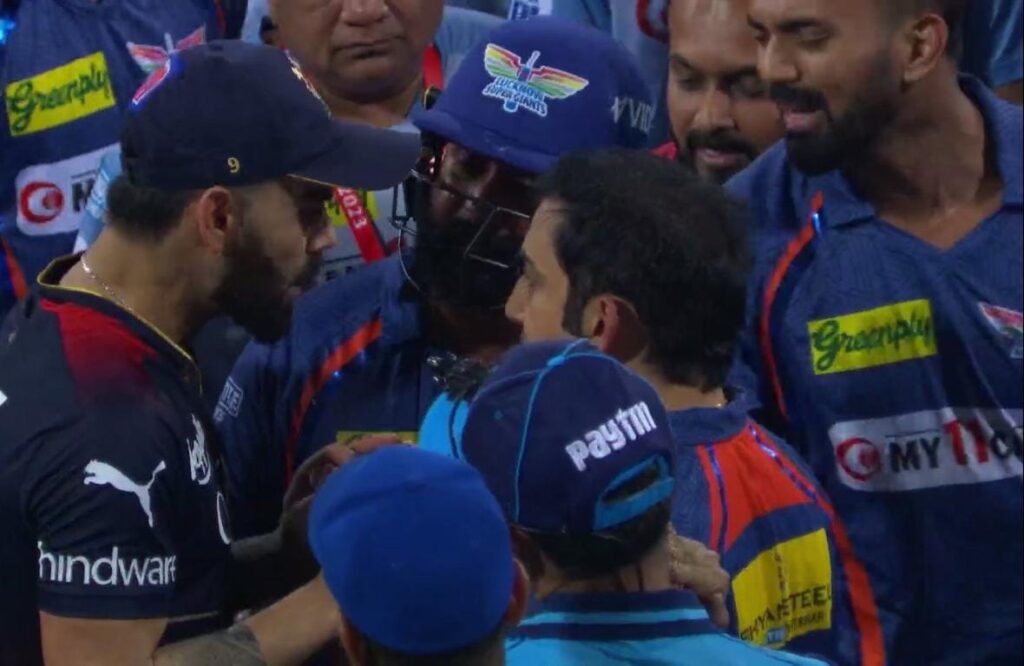
Before the Indian Premier League’s inaugural season, there was some disquiet about the possibility of heated, on-field skirmishes between Indian and Australian players. The Sydney Cricket Ground had been witness to Monkeygate just over three months earlier, and The Sydney Morning Herald, the country’s leading newspaper, had called Australia’s controversial victory “the ugliest performance put up by an Australian side for 20 years”. Peter Roebuck, their columnist, had gone further and accused Ricky Ponting, the Australian captain, of turning “a group of professional cricketers into wild dogs”.
What happened in Sydney was hardly a one-off either. In 2003, Glenn McGrath and the West Indies’ Ramnaresh Sarwan had to be separated after nearly coming to blows. In an incident that summed up Australia’s breathtaking hypocrisy, McGrath seemed to think it was fine to keep mouthing lewd and explicit comments to Sarwan as he batted. The minute Sarwan responded in kind, however, by mentioning his wife, McGrath tried to grab him by the throat. “Banter”, if it’s an Aussie dishing it out, and not okay when the opponent answers back.
At the time the IPL began, despite India’s surprise triumph at the T20 World Cup in September 2007, Australia were universally acknowledged as the world’s best all-format team. And there was both shock and some anger within their ranks when even players on the fringes of the Indian set-up, like Robin Uthappa, Yusuf Pathan and Sreesanth, fetched more money at the auction than legends like Ponting and the recently retired Shane Warne.
Is cricket still a gentleman’s game? Virat Kohli and Gautam Gambhir’s ugly spat on Monday night in Lucknow proves otherwise.
Watch this video for more👇@ThumsUpOfficial #ViratKohli #GautamGhambir #LSGvsRCB pic.twitter.com/xPA1NXuuO1
— RevSportz (@RevSportz) May 2, 2023
In the aftermath of Monekygate, Matthew Hayden, whose relentless bullying of opposition batters while fielding close in was notorious, had called Harbhajan ‘an obnoxious little weed’ on a radio talk show in Australia. And early on in the IPL season, at a post-match press conference, Hayden dismissed Sreesanth as ‘an ordinary bowler’. Clearly, Sreesanth’s frenzied celebrations after cleaning up both Hayden and Adam Gilchrist in the T20 World Cup semifinal still rankled.
But when the IPL’s first tinderbox moment came, Hayden was nowhere in sight. Instead, it was the two Indians he had singled out for scathing comments that were at the heart of it. During the half-decade that he played for India, Sreesanth developed a reputation for two things – immaculate seam presentation while bowling, envied by even the legends of the craft, and a knack of rubbing everyone, opponents and even teammates, the wrong way.
‘More Fighting than Cricket Going on’: Harbhajan on Kohli-Gambhir Spat
He had chirped his way through most of Kings XI Punjab’s comprehensive win over Harbhajan’s Mumbai Indians. At some point, Harbhajan, never the calmest of customers himself, snapped and slapped Sreesanth. It was hardly comparable to a Mike Tyson punch, but it was enough for Sreesanth to dissolve into floods of tears, and for Harhabjan to be banned for the remainder of the season.
In the years since, we have seen Kieron Pollard fling his bat at Mitchell Starc – thankfully, his radar was awry, and no one got hurt – and exchange robust pleasantries with Shane Watson. Those incidents could be viewed as a continuation of the bad blood that sometimes bubbles to the surface when players from the Caribbean and Australia, who once contested cricket’s most gripping rivalry, cross paths.
You would expect that at times from players who have grown up with tales of a storied rivalry – Michael Clarke’s uncharacteristic get-ready-for-a-broken-profanity-arm sledge to James Anderson during the Ashes in 2013-14 is a good example – but it can be shocking when the protagonists involved have been brothers in arms.
When Virat Kohli lost his father midway through a Ranji Trophy match against Karnataka in December 2006, India were playing South Africa in a Test match at the Wanderers. Gautam Gambhir was in the squad, but not the playing XI, and many of the Indian journalists there got their first updates – on how Kohli had come back and batted so bravely for his 90 before heading to the cremation – from the Delhi contingent in the squad.
The two men were instrumental in India winning the World Cup as well, with an 83-run third-wicket stand that switched the momentum after Sri Lanka had taken two early wickets. But almost exactly two years later at the Chinnaswamy Stadium in Bangalore, they were in each other’s faces, and might have come to blows but for the intervention of Rajat Bhatia. Gambhir was captaining Kolkata Knight Riders at the time, and his reaction after Kohli had skied a catch to Eoin Morgan led to the same sort of disgraceful scenes that were repeated in Lucknow a decade later.
It wasn’t as bad as Rashid Patel chasing and beating Raman Lamba with a stump during an ugly Duleep Trophy final in 1991, but it could well have escalated if not for the intervention of cooler heads. For the lPL, it was a horrible spectacle, as one of the league’s marquee players squared off with a team mentor who had once captained a franchise to two titles. If your biggest assets behave like this, what does it do for the brand?
There will be several witness accounts as to what happened, all of varying reliability. But the bottom line is that two senior and respected figures in Indian cricket led it down badly on Monday night. Patel was banned for 13 months and Lamba for 10 for their part in bringing the game into disrepute. Fining Gambhir and Kohli just their match fee isn’t even a slap on the wrist. It sends an awful message to budding cricketers everywhere, that you can get away with the thug life. It shouldn’t be that way.




